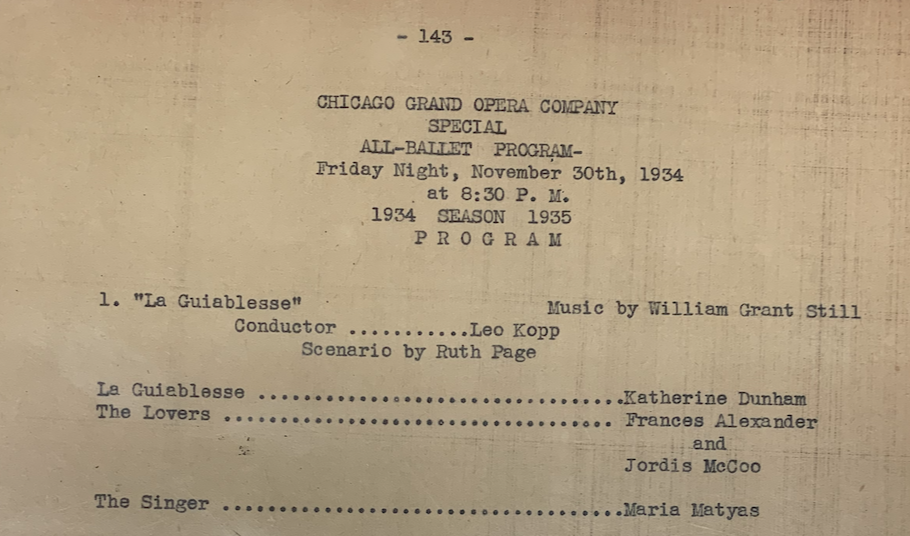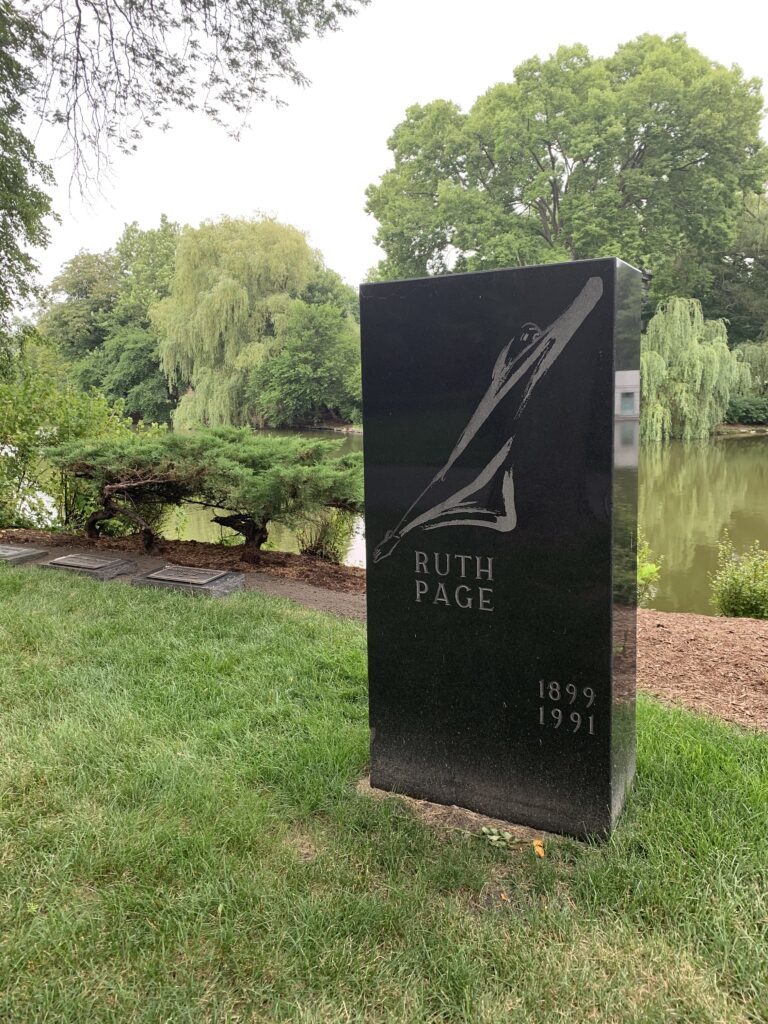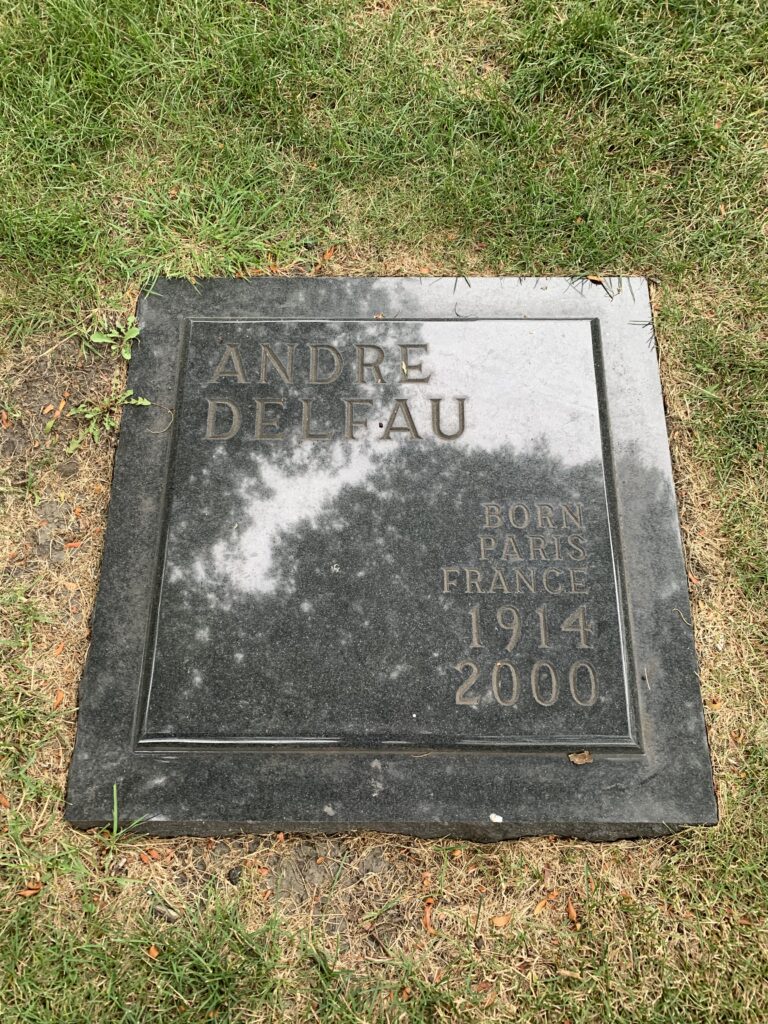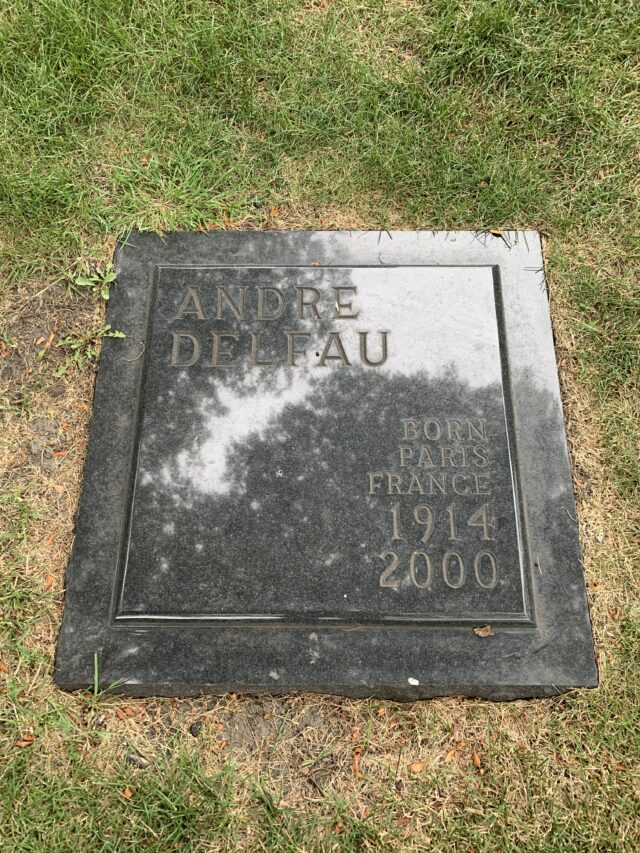The beginning of the school year is somehow swiftly approaching and as I’m drafting my research paper, I’m taking stock of all of the information I’ve collected this summer – and reflecting on the opportunities I’ve had to conduct primary source research that doesn’t entail sitting in front of my computer reading historical newspaper articles or in a chair reading a scholarly journal article or book. I feel grateful for the primary source experiences in particular, given the limitations that the pandemic – and the confusing, insufficient national response to the pandemic – has placed on us all.
Archive Visit:
While digging for more information about two Black women who helped Ruth Page assemble and organize the corps de ballet dancers for her production La Guiablesse (1933), I stumbled upon information about an archive at a regional library in Chicago that I did not previously know existed: the Vivian G. Harsh Collection of Afro-American History and Literature of the Chicago Public Library at the Woodson Regional Library on the south side of the city. Since I have been in Chicago living with my family and Chicago Public Library locations have mostly all reopened, I quickly booked an appointment to visit the collection and read essay sections from the WPA-era Illinois Writers Project “Negro in Illinois” Papers, specifically pieces of an essay titled “Colored Culture in Chicago” written between 1937 and 1938 by a person named Kitty Chapelle (about whom I have not been able to find much information). The essay sections include insight into La Guiablesse (both its 1933 and 1934 Chicago productions), Katherine Dunham (the famous dancer, choreographer, and anthropologist, who performed in the ballet, and acquired the ballet for her own company), and Bertha Moseley Lewis – one of the Black women who collaborated with Page to coordinate Black dancers to perform in the production and who was a leader of the Black theater community in Chicago in the early 20th century. It was a bizarre but rewarding experience to set foot in a library after many months of avoiding most indoor public spaces. The librarian graciously pulled the box I had asked to see, and ushered me into a room where I spent about four hours in solitude sifting through pages of writing, taking notes and photos. It felt good to interact in “real life” with primary source material.

Oral History Interviews:
Since I last posted, I have also conducted two oral history interviews over the phone, both of which were enlightening and encouraging. I spoke with Venetia Stifler, Artistic and Executive Director of the Ruth Page Center for the Arts, and Thea Flaum, Chairman and President of the Ruth Page Foundation and a television producer who created two PBS specials and collected a video archive on Page. I appreciate the generosity and candor that they each brought to our conversations, and found both personal and academic resonance in the stories and details they shared with me. I am looking forward to (hopefully) conducting additional oral history interviews over the phone – and perhaps at some point in the not-too-distant future, in person.
Visiting Page’s Grave:
Another recent, rewarding in-person activity was visiting Ruth Page’s grave, at Graceland Cemetery on the north side of Chicago (where a number of my family members happen to also be buried). On a whim, my dad, my partner, and I traversed through the cemetery while heading home from a bike ride. Graceland is, as noted on its website, “a serene yet vibrant park-like cemetery” that was “[d]esigned by visionary landscape architects, including O.C. Simonds” (gracelandcemetery.org). Walking its grounds is very pleasant. Page is buried in a beautiful spot overlooking a pond, next to her second husband, Andre Delfau, and the famous Chicago baseball player Ernie Banks. Her grave marker features an etching of Page, costumed in a sac-like garment designed for her by the sculptor and artist, Isamu Noguchi, with whom Page collaborated (and had an affair). Though the gravesite doesn’t reveal anything new in regard to my research, necessarily, it was an important reminder to me that Page was once a real, live person – not only a person I’m spending a lot of time reading about in books – and an important, influential citizen of Chicago.


As we move into the last couple of weeks of the summer (alas), I’m drafting my research paper, which is focused on Page’s ballet La Guiablesse and its two presentations in 1933 and 1934 respectively. These two productions of the ballet provide an illuminating look at the artistic, social, cultural, and race-based (and interracial) communities and networks of Chicago in the 1930s. I’m looking forward to using both my paper and this summer’s research as resources, as I continue to work on my thesis project this year.
